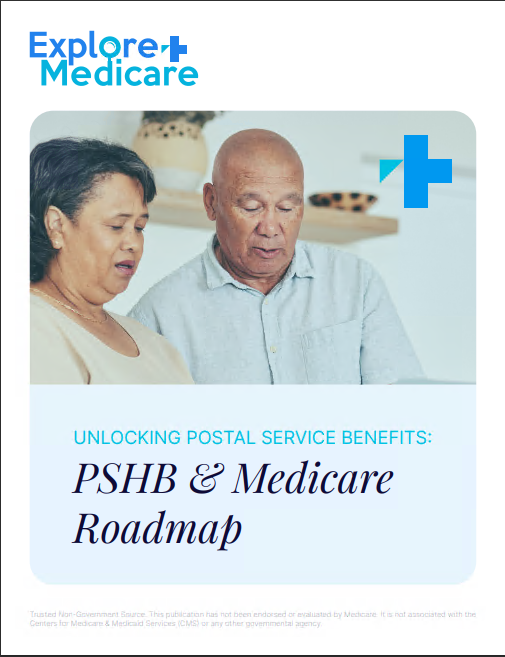Key Takeaways
-
Turning 65 unlocks a critical window to enroll in Medicare and avoid future penalties or delays.
-
Understanding the basics of Parts A, B, C, and D now will save you stress, money, and confusion later.
So, You’re Almost 65. Let’s Talk
Medicare probably wasn’t your favorite topic a few years ago—but now that you’re approaching 65, it matters. Like, really matters. Whether you’re retiring soon or still planning to work, this is the point where you need to understand your options.
No one hands you a manual when you hit 64 and a half, but trust me, there are things you should know before that 65th birthday rolls around. If you wait too long or enroll the wrong way, it could cost you.
Your Initial Enrollment Period (IEP) Isn’t Optional
You have a seven-month window to sign up for Medicare. It starts three months before the month you turn 65, includes your birth month, and lasts three months after.
Here’s what happens during the IEP:
-
You can enroll in Medicare Part A (hospital insurance) and Part B (medical insurance).
-
If you delay signing up for Part B without having other qualifying coverage, you may face a lifetime late enrollment penalty.
-
It’s also your first chance to add Part D (prescription drug coverage), if you need it.
This period matters even if you’re still working or covered by a spouse’s plan. Depending on the size of your (or your spouse’s) employer, Medicare could still be your primary coverage at 65.
Understanding the Alphabet Soup: Parts A, B, C, and D
Medicare isn’t just one big plan—it’s four separate parts, each doing its own thing.
Part A – Hospital Insurance
Covers:
-
Inpatient hospital stays
-
Skilled nursing facility care
-
Hospice
-
Some home health care
Most people don’t pay a premium for Part A if they’ve worked at least 10 years.
Part B – Medical Insurance
Covers:
-
Doctor visits
-
Outpatient services
-
Preventive screenings
-
Durable medical equipment
You do pay a monthly premium for Part B, and in 2025, that standard premium is $185. If your income is above a certain threshold, you could pay more.
Part C – Medicare Advantage
This is an alternative to Original Medicare. These plans are offered by private insurers and combine Parts A and B, and often include drug coverage and extras like dental or vision. Just know that rules and costs can vary a lot.
Part D – Prescription Drug Coverage
Standalone plans help cover your medications. In 2025, there’s a $2,000 out-of-pocket cap, which is a huge relief compared to past years. The standard deductible is now $590, and then your plan starts helping out.
Still Working at 65? Here’s What You Need to Know
If you have group coverage through an employer (yours or your spouse’s), whether you need to sign up for Medicare right away depends on the company size:
-
20 or more employees: You can delay Part B without penalty, since your employer coverage remains primary.
-
Fewer than 20 employees: Medicare becomes your primary coverage at 65. Not enrolling could leave you with no real coverage.
It’s usually smart to sign up for Part A anyway, since it’s free for most people and can work alongside your employer plan.
What Happens If You Miss the Initial Window?
If you skip your IEP and don’t have qualifying coverage, you’ll have to wait for the General Enrollment Period (January 1 to March 31), and your coverage won’t begin until July 1.
And yes, late penalties are a thing:
-
Part B Penalty: 10% added to your premium for every 12-month period you were eligible but didn’t sign up.
-
Part D Penalty: 1% of the national base premium for every month you didn’t have coverage.
These penalties don’t go away—they stick around as long as you have Medicare.
Timing Your Retirement? Coordinate It With Medicare
Planning to retire around your 65th birthday? Make sure you:
-
Enroll in Medicare before your employer coverage ends
-
Request a Special Enrollment Period if your coverage ends outside the normal IEP
-
Avoid coverage gaps between private insurance ending and Medicare starting
Special Enrollment Periods give you 8 months to sign up for Part B after losing employer coverage, and 63 days to get Part D.
Don’t Ignore the Drug Coverage Decision
Even if you don’t take many meds right now, skipping Part D can be risky. The penalty stacks up monthly, and you can’t just sign up whenever you feel like it.
And remember that in 2025, the out-of-pocket cap for drug costs is $2,000. That means even if you need expensive prescriptions, you’ll have some protection.
Medicare Won’t Cover Everything
Original Medicare doesn’t cover:
-
Routine dental, vision, or hearing exams
-
Most prescription drugs
-
Long-term care
That’s why many people add supplemental coverage or look at other options. Just don’t assume Medicare is all you’ll ever need.
Costs You Should Expect in 2025
Let’s break down some of the core expenses:
-
Part A Deductible: $1,676 per benefit period
-
Part B Premium: $185/month
-
Part B Deductible: $257 annually
-
Part D Deductible: Up to $590, depending on the plan
-
Drug cost cap under Part D: $2,000 annually
Also, there are out-of-pocket costs like coinsurance and copays. While Medicare covers a lot, you’re still on the hook for some cost-sharing.
What If You’re Getting Social Security Already?
If you’re already receiving Social Security benefits, you’ll be automatically enrolled in Part A and Part B starting the first day of the month you turn 65. You’ll get a Medicare card in the mail a few months before.
If you want to delay Part B, you’ll need to actively opt out. Otherwise, the premium will be deducted from your Social Security check.
How to Apply When You’re Ready
If you’re not auto-enrolled, you can sign up:
-
Online at the Social Security website
-
By phone or in person at your local Social Security office
-
Through a licensed agent if you want help reviewing your options
You don’t need to do it all alone, especially if your situation is a little more complex.
Watch Out for These Common Pitfalls
-
Missing deadlines: This leads to penalties and delayed coverage.
-
Assuming Medicare covers everything: It doesn’t.
-
Not coordinating with other insurance: Especially important if you’re still working.
-
Skipping drug coverage: Even if you don’t take any meds, penalties will still apply.
-
Overlooking your income tier: Higher earners pay more for Part B and D through IRMAA.
Knowing these in advance can save you frustration down the line.
Final Thoughts Before You Hit 65
There’s no denying it—Medicare can feel like a maze. But taking the time to figure it out before your birthday gives you a serious edge. You don’t have to be an expert, just informed enough to make choices that fit your life and budget.
Getting in touch with a licensed agent listed on this website can make all the difference if you want a second pair of eyes on your plan.







